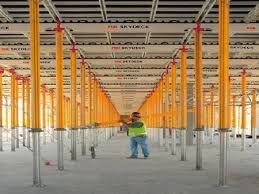Nov . 15, 2024 11:28 Back to list
china formwork for concrete walls
The Evolution and Significance of Formwork in Concrete Wall Construction in China
In recent years, China has seen a remarkable surge in construction activity, driven by urbanization and infrastructural development. A critical component of this rapid expansion is the effective use of formwork systems for concrete walls, which play a significant role in the durability, efficiency, and aesthetic qualities of buildings. This article explores the evolution of formwork technology in China, its types, advantages, and the challenges faced within the industry.
Understanding Formwork
Formwork is a temporary or permanent mold into which concrete is poured to create structures such as walls, slabs, and columns. It provides the necessary shape, support, and surface finish to the concrete as it sets. The use of formwork allows for flexibility in design while ensuring that the structural integrity and aesthetics of a building are maintained.
The Evolution of Formwork in China
China's approach to formwork has evolved significantly over the past few decades. In earlier times, traditional wooden formwork was predominantly used. Although this method was cost-effective and readily available, it had significant limitations, including labor intensity and low durability. As the construction industry progressed, so did the technology. The introduction of steel and aluminum formwork systems has transformed the landscape, offering increased durability and efficiency.
The turn of the 21st century marked a significant shift towards industrialized construction methods in China. This change was driven by the need to improve construction speed, reduce labor costs, and enhance safety. Prefabricated formwork systems, which allow for quicker assembly and disassembly, have become increasingly popular. Moreover, advances in materials science have led to the development of plastic and composite formwork, providing even more options for builders.
Types of Formwork
Formwork systems can be categorized into several types, each with its unique advantages
1. Traditional Timber Formwork Familiar and widely used in the past, timber formwork is still employed for small projects due to its low cost and availability. However, it is labor-intensive and has a limited lifespan.
2. Steel Formwork Known for its durability, steel formwork can be reused multiple times, making it ideal for larger projects. Its rigidity allows for precise shapes and finishes, although the initial investment is higher compared to wood.
3. Aluminum Formwork Lightweight and easier to handle than steel, aluminum formwork has gained popularity, particularly in high-rise construction. Its modular design allows for quick assembly, reducing labor costs and time.
4. Plastic Formwork Lightweight and resistant to corrosion, plastic formwork is increasingly utilized for residential projects. It is easy to clean and can be reused many times, making it a sustainable option.
5. Permanent Formwork Systems These systems remain in place after the concrete has cured, providing insulation and structural support. They are primarily used in energy-efficient building designs.
china formwork for concrete walls

Advantages of Modern Formwork Systems
The benefits of advanced formwork systems are multifaceted
- Time Efficiency Modern formwork allows for rapid construction, enabling projects to be completed in shorter timelines.
- Cost Savings While the initial investment might be higher, the reusability of steel, aluminum, and plastic formwork leads to significant long-term savings on materials and labor.
- Quality and Precision Advanced formwork systems facilitate high-quality finishes and precise dimensions, which are critical for structural integrity.
- Safety Enhancements With better materials and designs, modern formwork systems reduce the risks associated with manual labor and construction accidents.
Challenges in the Industry
Despite the advancements, the formwork industry in China faces several challenges. These include
- Quality Control Maintaining consistent quality across different formwork systems can be difficult, leading to potential structural issues.
- Environmental Concerns The production and disposal of formwork materials, especially those that are not reusable, can have significant environmental impacts.
- Skill Gap As new technologies emerge, there is a growing demand for skilled labor familiar with modern formwork systems and techniques.
Conclusion
The use of formwork in concrete wall construction has evolved dramatically in China, reflecting advancements in technology and changes in construction practices. As the industry continues to innovate, embracing sustainable practices and addressing challenges, the future of formwork holds promise, paving the way for safer, more efficient, and aesthetically pleasing building solutions in urban environments. Through ongoing research and development, the construction sector in China is poised to maintain its leadership in formwork technology, setting benchmarks for quality and sustainability in the global market.
-
High-Quality U Head Jack Scaffolding – Reliable Scaffolding Jack Head Manufacturer & Factory
NewsJul.08,2025
-
High-Quality I Beam H20 Leading Timber Beam H20 Material Factory, Exporters & Manufacturers
NewsJul.08,2025
-
High-Quality Powder Coating Steel Formwork - Durable & Corrosion Resistant Solutions
NewsJul.07,2025
-
Inclined Column Formwork Supplier – Durable & Precise Solutions for Unique Structures
NewsJul.07,2025
-
High-Quality Water Stop Solutions Trusted Water Stop Company & Suppliers
NewsJul.07,2025
-
High-Quality Formwork Material Supplier Reliable Manufacturer & Factory Solutions
NewsJul.06,2025